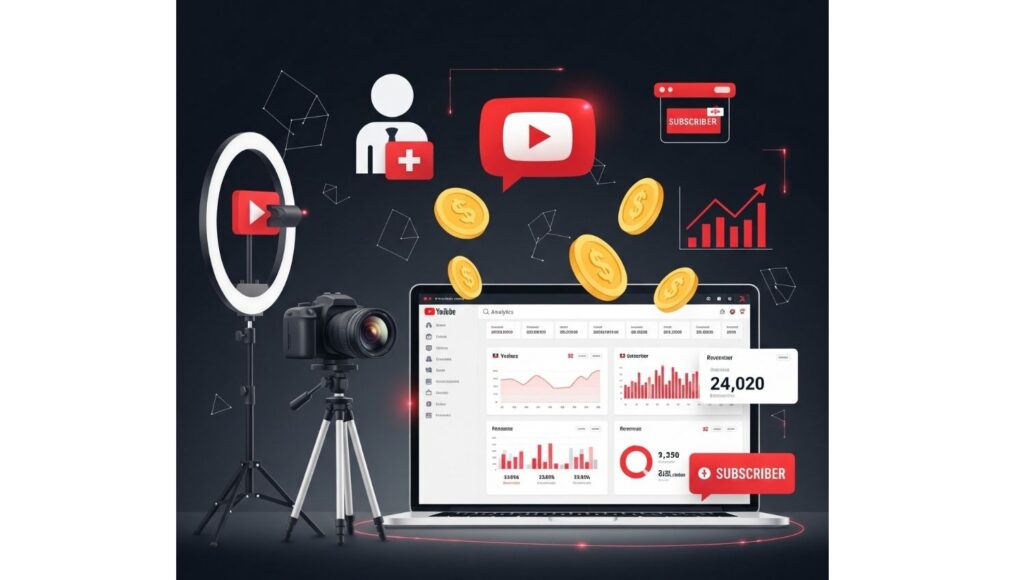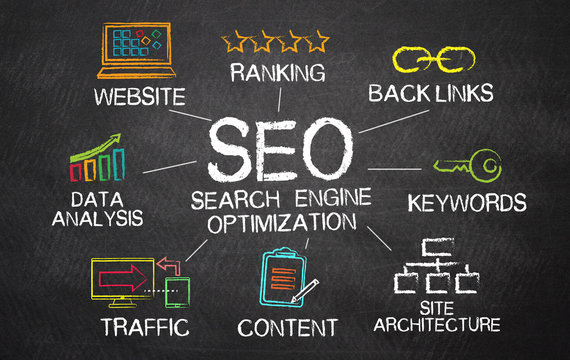How to Monetize YouTube Channel: Step-by-Step Guide to Make Money from Your Content
Table of Contents

YouTube has evolved way beyond being a mere video-sharing platform. It’s now one of the strongest income-generating tools in the arsenal of creators, business owners, and enterprises. With more than 2 billion monthly active users, YouTube presents not only visibility but even the possibility of monetizing imagination and constructing a viable digital career.
In this article, we’ll break down step-by-step strategies on how to monetize your YouTube channel, from meeting YouTube Partner Program requirements to exploring alternative income streams. By the end, you’ll have a clear roadmap to turn your channel into a consistent source of income.
1. Why Monetizing YouTube Matters
YouTube monetization isn’t just about money—it’s about recognition, sustainability, and scalability. Here’s why it’s powerful:
- Financial Freedom – Rather than relying on a 9-to-5 job, you create income around your passion.
- International Audience – Your videos have access to audiences from all over the globe.
- Monetizable Business Model – As opposed to freelance or hourly labor, YouTube content keeps earning money long after upload.
- Brand Development – Monetization turns a channel into a brand that brings sponsors, advertisers, and collaborations.
2. Minimum Requirements for YouTube Monetization
Prior to applying for the YouTube Partner Program (YPP), you need to fulfill eligibility requirements:
- 1,000 subscribers
- 4,000 watch hours in the past 12 months or 10M Shorts views in the past 90 days
- AdSense account associated with your channel
- Content guidelines compliance (no copyright strikes, no community guideline issues)
3. Step-by-Step Application Guide for YouTube Monetization
- Activate 2-Step Verification for account security.
- Navigate to YouTube Studio → Monetization tab.
- Agree to the terms of the YouTube Partner Program.
- Link your AdSense account.
- Wait for review and approval (typically within 30 days).
4. How to Monetize a YouTube Channel
Monetization on YouTube isn’t only from ads. These are several income sources:
(a) YouTube Ads (Google AdSense)
When approved, YouTube displays ads prior to, in the middle of, or after your videos. Income relies on:
- CPM (Cost per 1000 impressions) – Average $1–$10 depending on niche.
- Demographics of the audience – US/UK audiences command higher ad rates.
- Level of engagement – Increasing watch time generates more ad revenue.
(b) Channel Memberships
Subscribers can subscribe to your channel through a monthly subscription for exclusive badges, emojis, and rewards.
(c) Super Chat & Super Stickers
Fans pay to make their messages stand out in live streams. Excellent opportunity for creators with engaged communities.
(d) YouTube Premium Revenue
Earn a revenue share when YouTube Premium subscribers watch your videos.
(e) Sponsored Content & Brand Deals
Brands pay you to advertise their product/service. Example: A fitness brand teaming up with a fitness YouTuber.
(f) Affiliate Marketing
Insert affiliate links in your description. Example: A tech channel with Amazon products.
(g) Selling Products & Merch
Sell merchandise such as t-shirts, mugs, or digital products (courses, e-books).
5. Selecting the Proper Niche for Optimized Monetization
Not all niches are created equal and pay equally. Some are high CPM niches, but others are competitive yet have larger audiences.
High-paying niches are:
- Finance & Investing (\$15–\$20 CPM)
- Software & Tech Tutorials (\$10–\$15 CPM)
- Business & Marketing (\$12–\$18 CPM)
- Health & Fitness (\$8–\$12 CPM)
Medium niches are: - Travel (\$5–\$8 CPM)
- Food & Cooking (\$3–\$6 CPM)
- Lifestyle & Vlogs (\$2–\$4 CPM)
Selecting the right niche affects your monetization potential.
6. SEO Optimization for Improved Monetization
YouTube SEO is the foundation of monetization. Without views, there’s no income.
- Keyword Research – Employ long-tail keywords within titles, descriptions, and tags.
- Engaging Thumbnails – Boost CTR through engaging designs.
- Strong Titles – Find a balance between SEO and human readibility.
- Engagement Signals – Likes, comments, and shares enhance ranking.
- Playlists – Promote binge-watching for extended watch times.
7. Monetization Blunders to Evade
- Imitation – Copyright strikes destroy monetization opportunities.
- Clickbait Headlines – Might attract views but damage trust and retention.
- Blanking Out Analytics – Revenue increases by learning from data and optimizing strategy.
- Forgetting Audience Engagement – Building a community is essential to long-term success.
8. Sophisticated Monetization Tactics
When you pass the elementary hurdle, prioritize growth in revenue:
- Launch Online Courses – Share your expertise with the world.
- Build a Community Outside YouTube – Telegram, Discord, or Email list for more control.
- Run Paid Ads on Your Own Content – Increase your reach and earnings.
- Leverage AI Tools – For video editing, subtitles, and repurposing content.
9. Case Studies: Successful YouTube Monetization
- MrBeast – Created a brand empire using ad revenue, sponsorships, and businesses.
- Marques Brownlee (MKBHD) – Partnerhips, tech reviews, and high CPM ads.
- Fitness YouTubers – Merchandising, programs, and memberships monetization.
10. The Future of YouTube Monetization
As AI tools, Shorts, and YouTube Shopping gain prominence, creators have endless possibilities. YouTube is evolving into a creator economy hub where one can create multi-million-dollar businesses.
Conclusion
Monetizing a YouTube channel needs strategy, consistency, and creativity. Begin by fulfilling YPP requirements, fine-tune your content, and diversify into more income sources beyond ads.
Frequently Asked Questions (FAQs)
1. How many subscribers do I need to monetize my YouTube channel?
To be eligible for the YouTube Partner Program (YPP), you must have at least 1,000 subscribers and 4,000 valid watch hours in the past 12 months OR 10 million Shorts views in the past 90 days.
2. Can I monetize my YouTube channel without 1,000 subscribers?
Yes, but indirectly by ads. You can earn from affiliate marketing, sponsorships, selling digital products, or crowdfunding even before you have 1,000 subscribers.
3. How long does it take YouTube to approve monetization?
After you request YPP, YouTube takes 2–4 weeks to evaluate your channel. It may be quicker or longer depending on the number of applications.
4. What kind of content qualifies for monetization?
You need to post original, advertiser-friendly content. Copied content or copyrighted content without permission (such as TV shows, movies, or songs) will not be eligible for monetization.
5. How much do I earn on YouTube?
Earnings depend on niche, audience, ad rates (CPM), and engagement. Creators typically make $2–$10 per 1,000 views, but more in lucrative niches such as finance, tech, or business.
6. What are the alternatives to AdSense monetization?
Aside from AdSense, you can also earn from:
- Brand sponsorships
- Affiliate marketing
- Selling digital products or courses
- Merchandise sales
- Memberships & Patreon
7. Can Shorts be monetized on YouTube?
Yes, YouTube supports monetization for Shorts creators through the Partner Program. When you reach 10 million Shorts views in 90 days, you can monetize with ads.
8. Do I need to pay tax on YouTube earnings?
Yes, YouTube earnings are taxable income. Depending on where you live, you might need to file tax forms with Google AdSense.
9. Can I monetize my channel if I create videos in Hindi (or any other language)?
Of course. YouTube is multi-lingual, so there’s no problem. Your earnings are less dependent on language and location and more on audience interaction.
10. What’s the quickest way to monetize a fresh YouTube channel?
- Choose a profitable niche
- Post regular, SEO-friendly content
- Leverage trending topics & Shorts for quicker growth
- Promote videos on social media
- Build a community with your viewers


